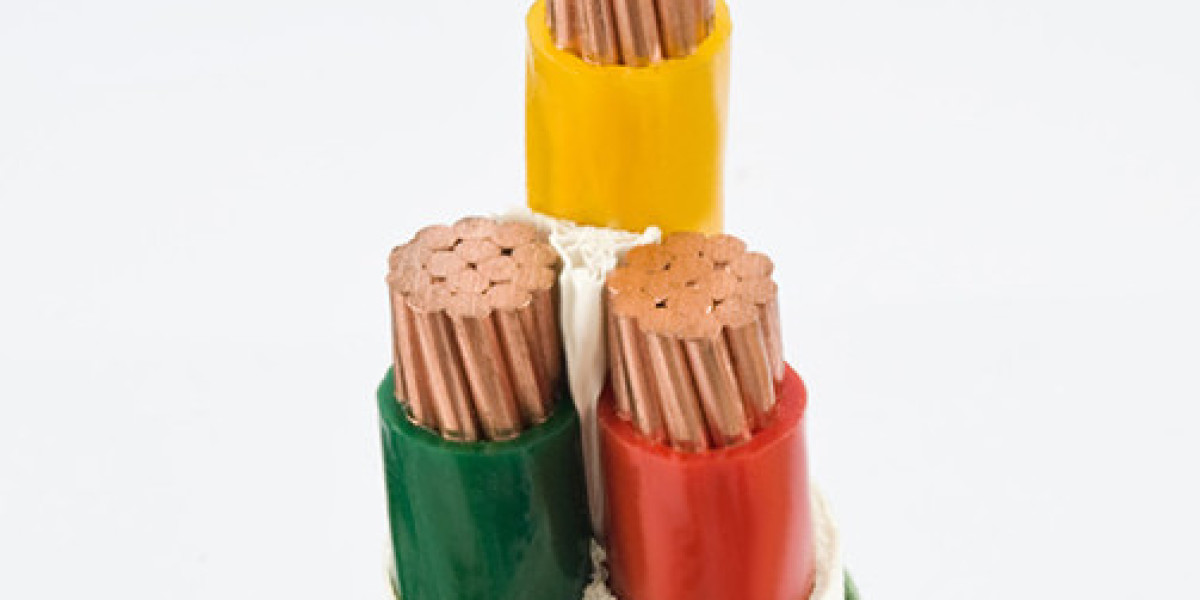Aerial power cables are a vital component of modern electrical transmission and distribution networks. These cables are installed overhead, supported by poles or towers, and designed to efficiently transmit electrical power across long distances. At HNBF Power, a trusted global manufacturer of overhead conductors and power cables, every aerial cable is engineered to meet international standards for safety, performance, and durability. This guide explores the structure, working principles, and advantages of aerial power cables used in various electrical infrastructure projects.
What Is an Aerial Power Cable?
An aerial power cable is a type of overhead electrical cable that carries power above the ground through air. Unlike underground cables, which require trenching and insulation against soil and moisture, aerial cables are exposed to open air and are supported by poles or lattice towers. These cables are commonly used in medium-voltage and low-voltage power distribution systems, especially in urban, rural, and industrial areas where overhead installation is more practical and cost-effective.
Aerial power cables can include:
Bare conductors such as AAC (All Aluminium Conductor), AAAC (All Aluminium Alloy Conductor), and ACSR (Aluminium Conductor Steel Reinforced).
Insulated aerial cables such as ABC (Aerial Bundled Cable) for safer low-voltage applications.
Structure and Construction of Aerial Power Cables
The design of an aerial power cable varies depending on the application and voltage level, but most share the following core components:
1. Conductor
The conductor is the central element that carries current. Materials such as aluminum, aluminum alloy, or aluminum with a steel core (in ACSR) are used for optimal conductivity and strength.
2. Insulation (for ABC and LV aerial cables)
In insulated aerial cables, a cross-linked polyethylene (XLPE) or PVC layer surrounds the conductor, providing protection against environmental factors and preventing electrical faults.
3. Messenger Wire or Neutral Support
Some aerial cables, particularly ABC systems, use a messenger wire often made of aluminum alloy or galvanized steel to support the cable mechanically and serve as the neutral conductor.
4. Outer Sheath (if applicable)
An outer sheath layer offers additional mechanical protection and resistance to UV radiation and weathering, extending the service life of the cable.
Key Advantages of Aerial Power Cables
1. Cost-Effective Installation
Aerial systems are faster and cheaper to install compared to underground power lines. They require minimal excavation and are easier to maintain or repair.
2. Enhanced Cooling and Heat Dissipation
Since aerial cables are exposed to air, they benefit from natural cooling, which helps maintain stable operating temperatures and extends cable longevity.
3. Easy Fault Detection and Maintenance
In the event of a fault or power interruption, overhead aerial cables allow quick visual inspection and simplified repair work, reducing downtime.
4. Reliable Performance in Various Environments
Aerial cables are built to withstand harsh weather conditions, including sunlight, wind, ice, and heavy rainfall. With proper design and installation, they ensure reliable power delivery for years.
5. Improved Safety with Insulated Designs
In low-voltage applications, Aerial Bundled Cables (ABC) provide enhanced safety by minimizing the risk of electrical shocks and short circuits, especially in densely populated or forested regions.
Applications of Aerial Power Cables
Aerial power cables from HNBF Power are used across a wide range of industries and public utilities, including:
Urban and rural distribution networks
Industrial and mining power systems
Temporary power supply setups
Construction and infrastructure projects
Renewable energy connections such as solar or wind farms
HNBF Power customizes aerial cable solutions to meet voltage requirements, mechanical strength, and environmental demands of each project.
HNBF Power’s Expertise in Aerial Power Cables
With advanced production facilities and strict adherence to IEC and ASTM standards, HNBF Power delivers aerial power cables designed for efficiency, durability, and performance. The company’s product range includes AAC, AAAC, ACSR, ABC, and LV aerial cables, all manufactured using high-grade aluminum and alloy materials. Each cable undergoes rigorous quality testing to ensure mechanical strength, electrical conductivity, and corrosion resistance.
By combining engineering expertise and international quality control, HNBF Power supports power utilities, EPC contractors, and industrial clients worldwide in building reliable overhead transmission and distribution systems.
Frequently Asked Questions (FAQs)
Q1: What is the difference between an aerial power cable and an underground cable?
Aerial power cables are installed above ground and supported by poles, while underground cables are buried beneath the surface. Aerial systems are easier and more economical to maintain.
Q2: What materials are commonly used in aerial power cables?
Aluminum, aluminum alloy, and aluminum-steel composites are commonly used due to their balance of conductivity, strength, and weight.
Q3: How long do aerial power cables last?
When properly installed and maintained, high-quality aerial power cables can last over 30 years, depending on environmental and load conditions.
Q4: Are aerial bundled cables (ABC) safer than bare conductors?
Yes. ABC cables feature insulated conductors, which greatly reduce the risk of electrical faults and enhance safety in populated areas.
Q5: Can HNBF Power provide customized aerial cable designs?
Absolutely. HNBF Power offers customized conductor configurations, insulation materials, and voltage ratings to meet specific project requirements.
Conclusion and Call to Action
Aerial power cables play an essential role in ensuring reliable and efficient power transmission across various applications. Their flexibility, cost-effectiveness, and adaptability make them a preferred choice for modern electrical infrastructure.
HNBF Power stands as a reliable global supplier of high-quality aerial power cables offering advanced materials, strict quality assurance, and engineering support for every project.
Contact HNBF Power today to discuss your custom aerial power cable requirements and discover the best solution for your electrical network.








